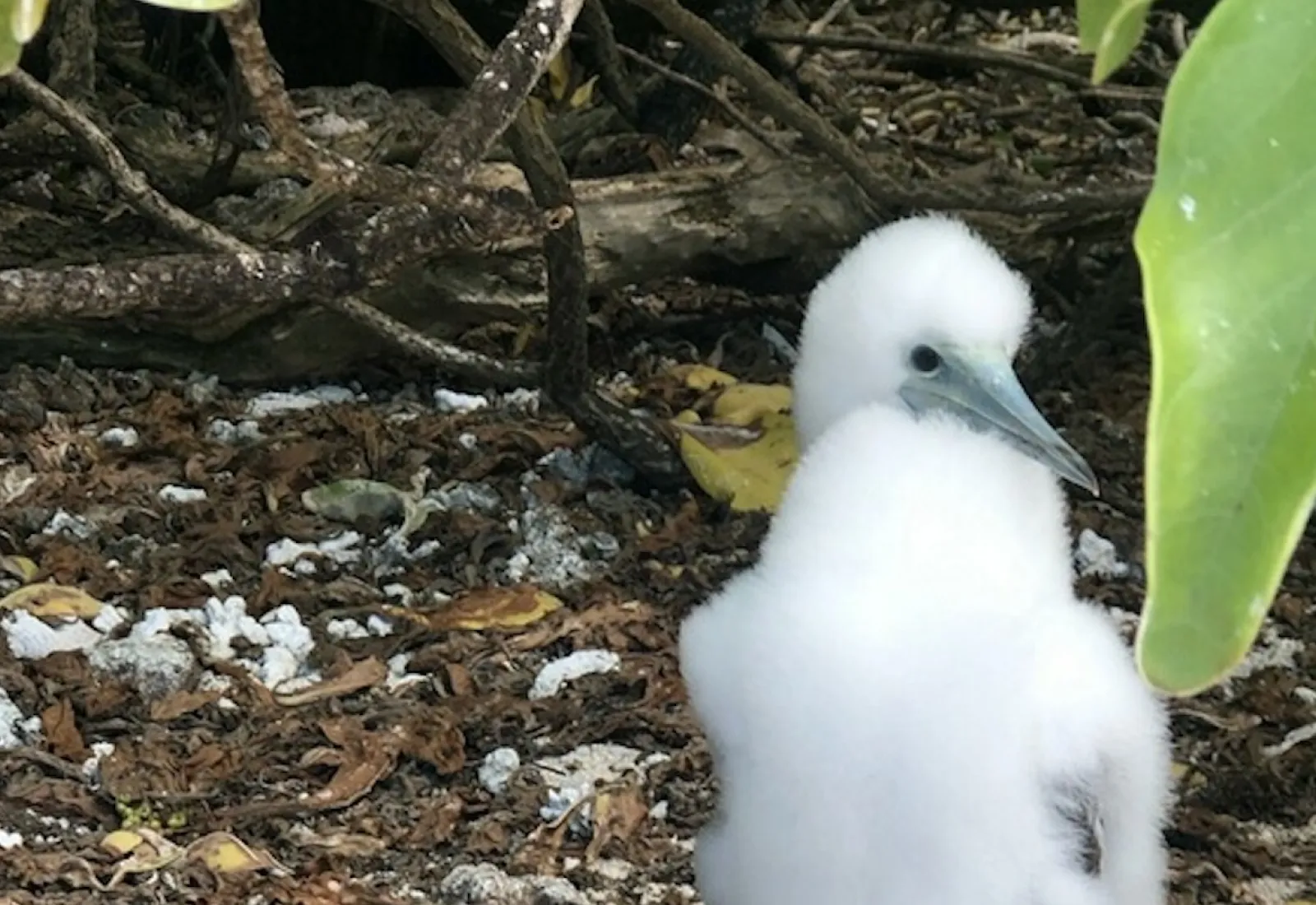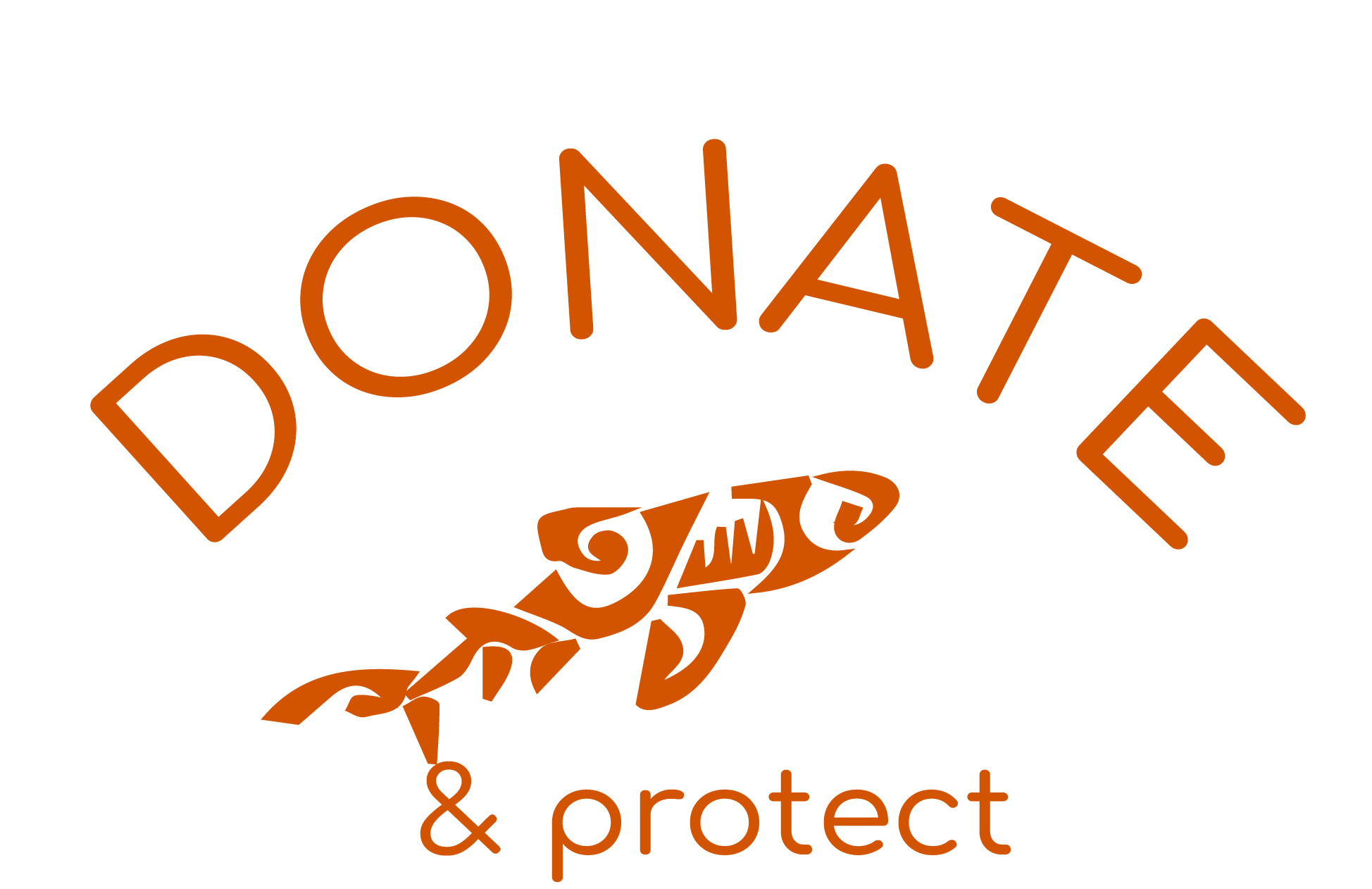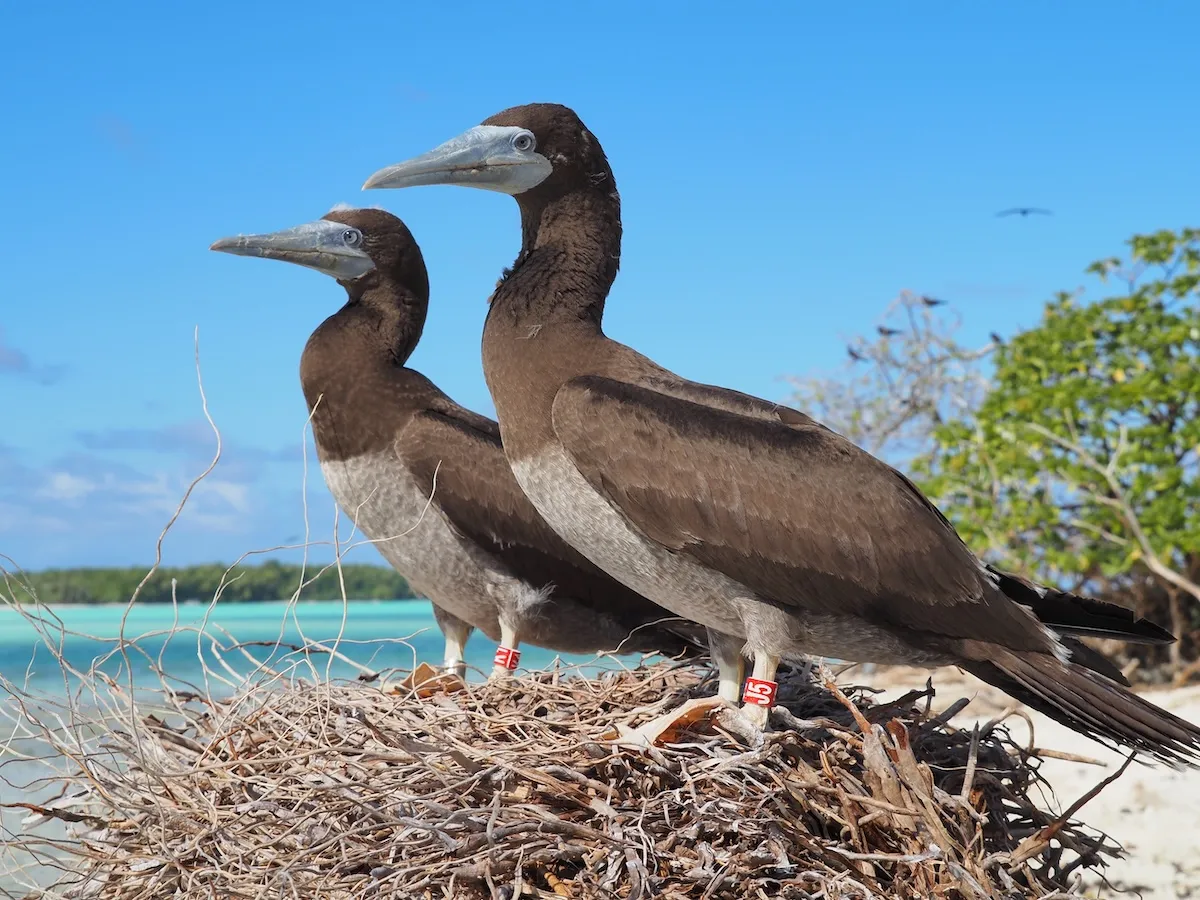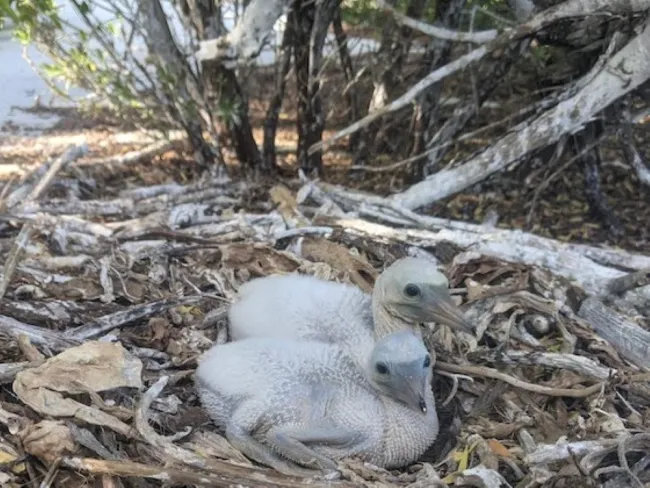This program aims to better understand the seabirds of Tetiaroa: where they live, how they use the different motu, how many there are, and whether they succeed in reproducing.
For this, several tools are used:
- rings to track certain birds individually,
- field counts to estimate their number,
- sound recorders to detect their presence even when they are not visible, and
- GPS tags placed on the brown boobies to know where they go to look for food around Tahiti, Moorea, or even further afield.
This monitoring allows us to better understand the health of Tetiaroa's seabird populations and the links between terrestrial and marine areas.
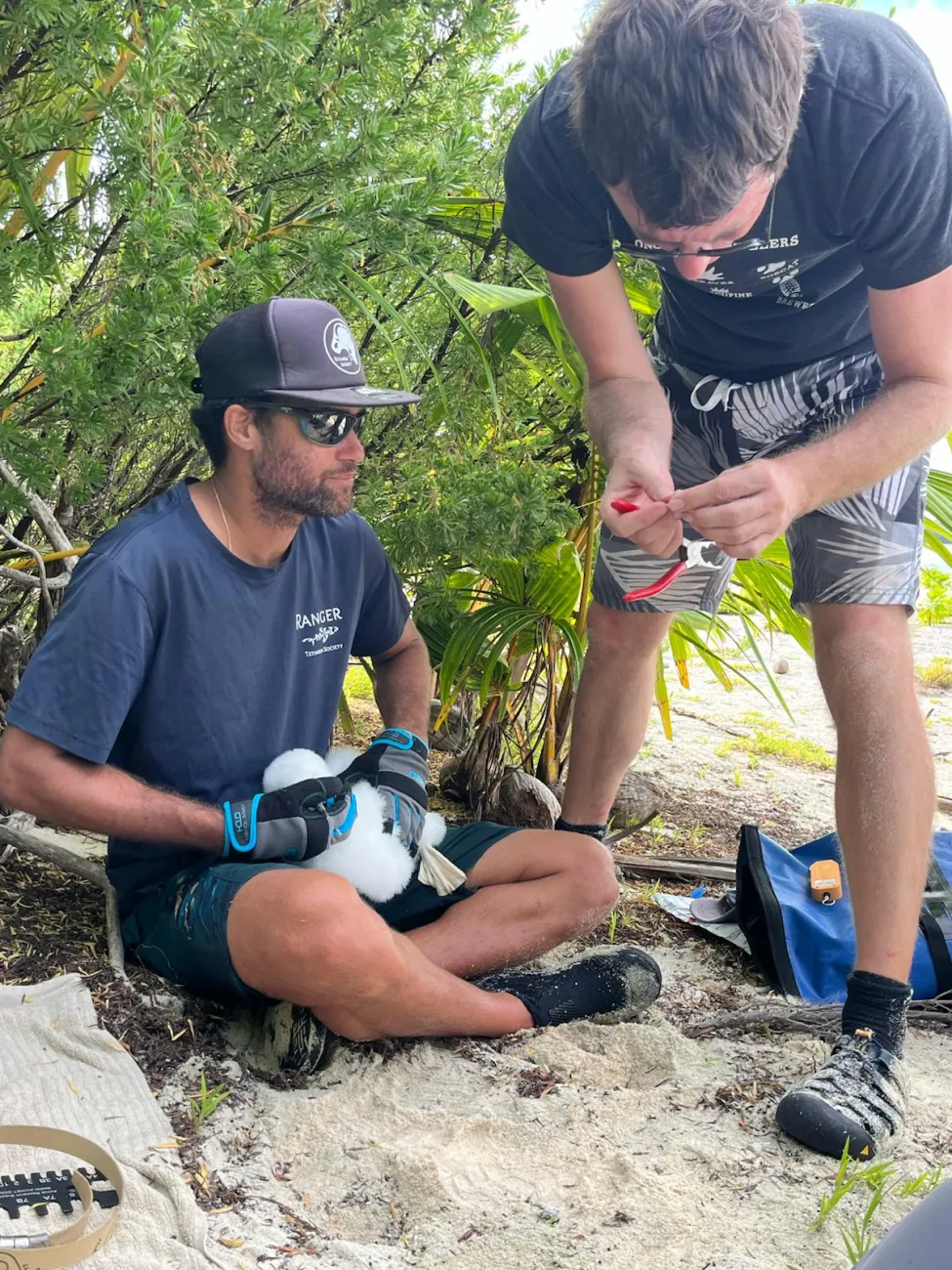
Summary of field activities
During the mission from May 12 to 21, 2025, two people carried out several activities on the motu, with work concentrated on Tahuna Iti, Tiara’aunu and Horoāterā.
The main actions were:
- the installation of new GPS tags on brown boobies,
- verification of sound recorders already installed on all motu,
- brown booby nest counts along a 1 km transect at Horoāterā (noting eggs, chicks, etc.),
- the installation of 5 cameras on the nests, to discreetly monitor reproduction.
Days were spent entirely in the field, often on foot or by kayak, and evenings were spent recharging equipment, backing up data, and preparing for the next day. The logistical support of the Tetiaroa Society was essential to the success of this mission.
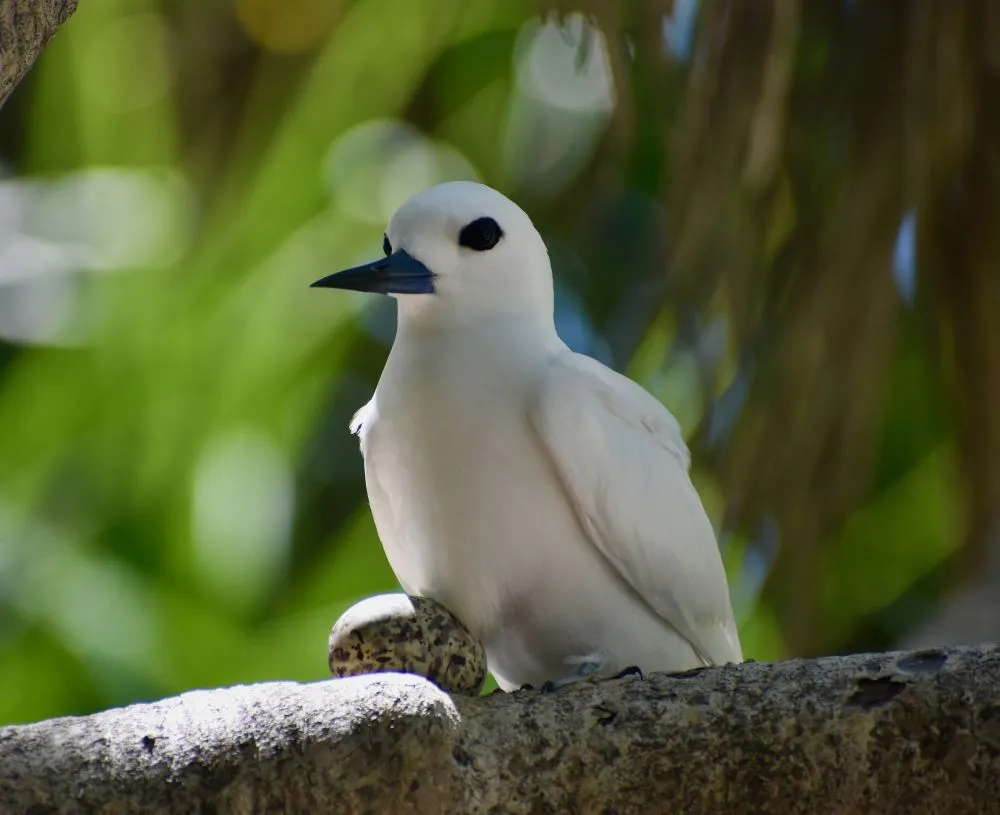
Impacts and preliminary results
Analyses are still ongoing, but several initial results are encouraging:
It appears that the El Niño phenomenon has an effect on the breeding success of brown boobies and on the number of red-footed boobies nests, which confirms expected hypotheses GPS data shows that some brown boobies regularly feed around Tahiti and Moorea, which will soon be explored in more detail using statistical models.
· Two notable observations: a brown booby was tracked to Ra’iātea, another to Mai’ao, showing the great mobility of these birds.
Perspectives
The programme will continue using the same tools and methods (ringing, GPS, acoustics, counting, nest monitoring). The following are also planned:
- extending GPS tracking to other species, such as certain terns,
- launching a comprehensive analysis of sound recordings collected since 2019, to better understand long-term trends in the presence and activity of seabirds in Tetiaroa


